Critical Tensions and Transformations Emerging within the Digital Art EcoSystem
Will a crypto-based art economy ever fulfil its promise of emancipation from the historical systems of access, power and value?
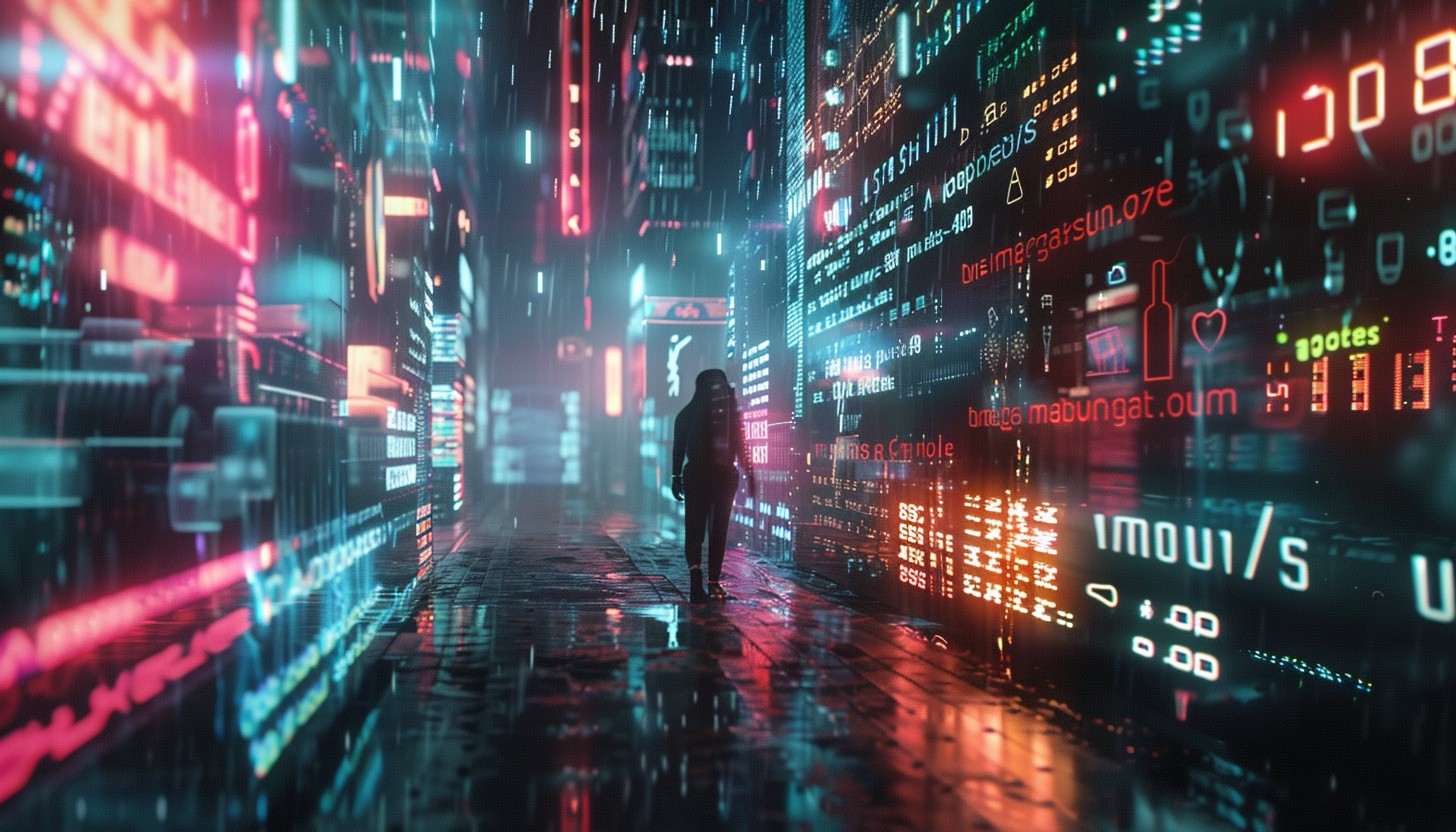

Web3’s Promise of Emancipation has Failed
The early days of the digital-native art system were web3 centric — community, decentralised power + value, and increased autonomy for actors within the system. The introduction of ‘outsiders’ to the system (galleries, VCs), swiftly leveraged both artists and artwork as speculative investments — promptly activated the same neoliberalism model within the digital space, that artists had been navigating in the physical world for decades.
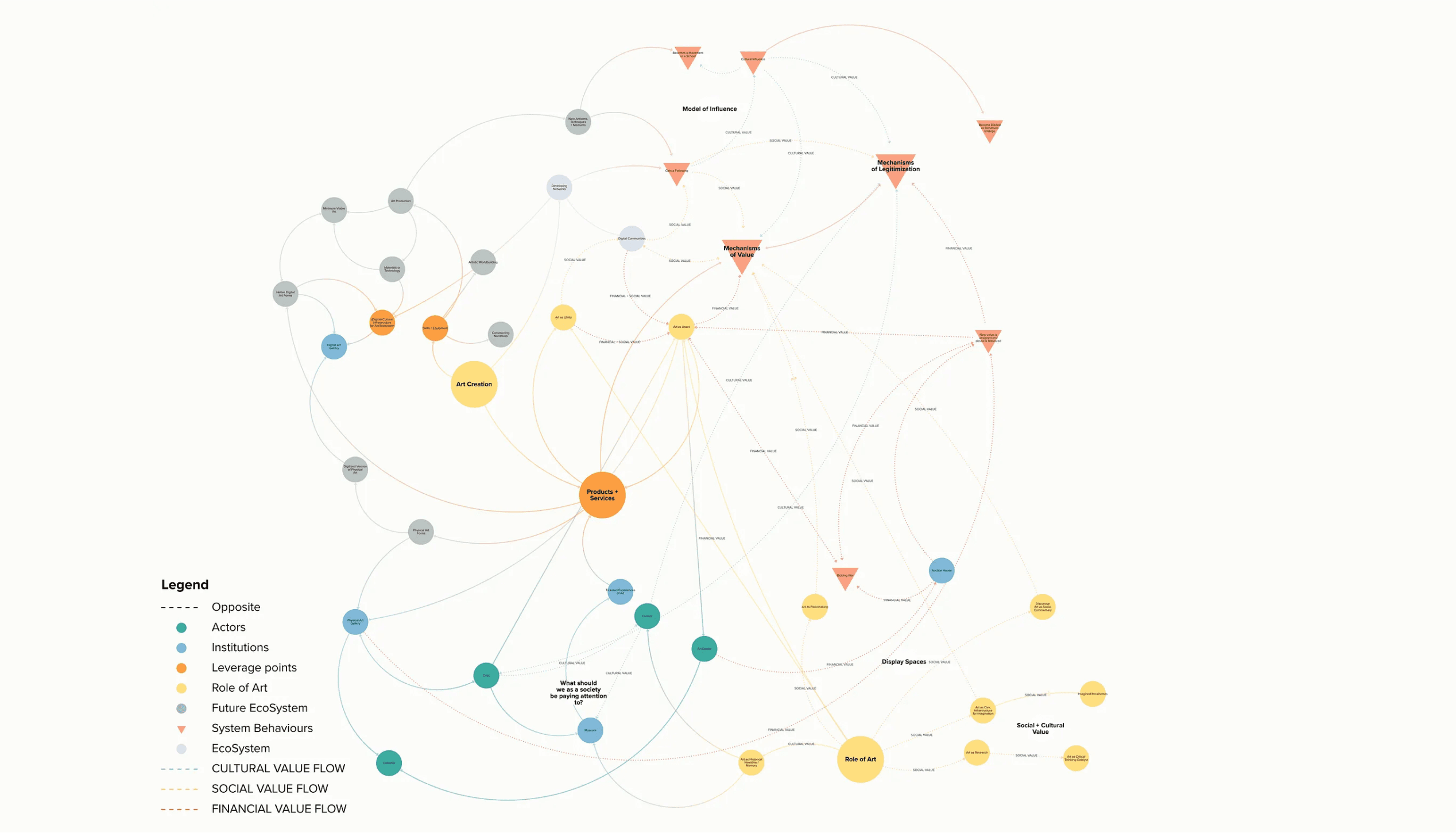
Art Ecosystem Live Map [ Foresight Workflow Tool : Kumu]
🔥 Issue 1: Web3’s promise of emancipation has failed to deliver for the majority of digital artists
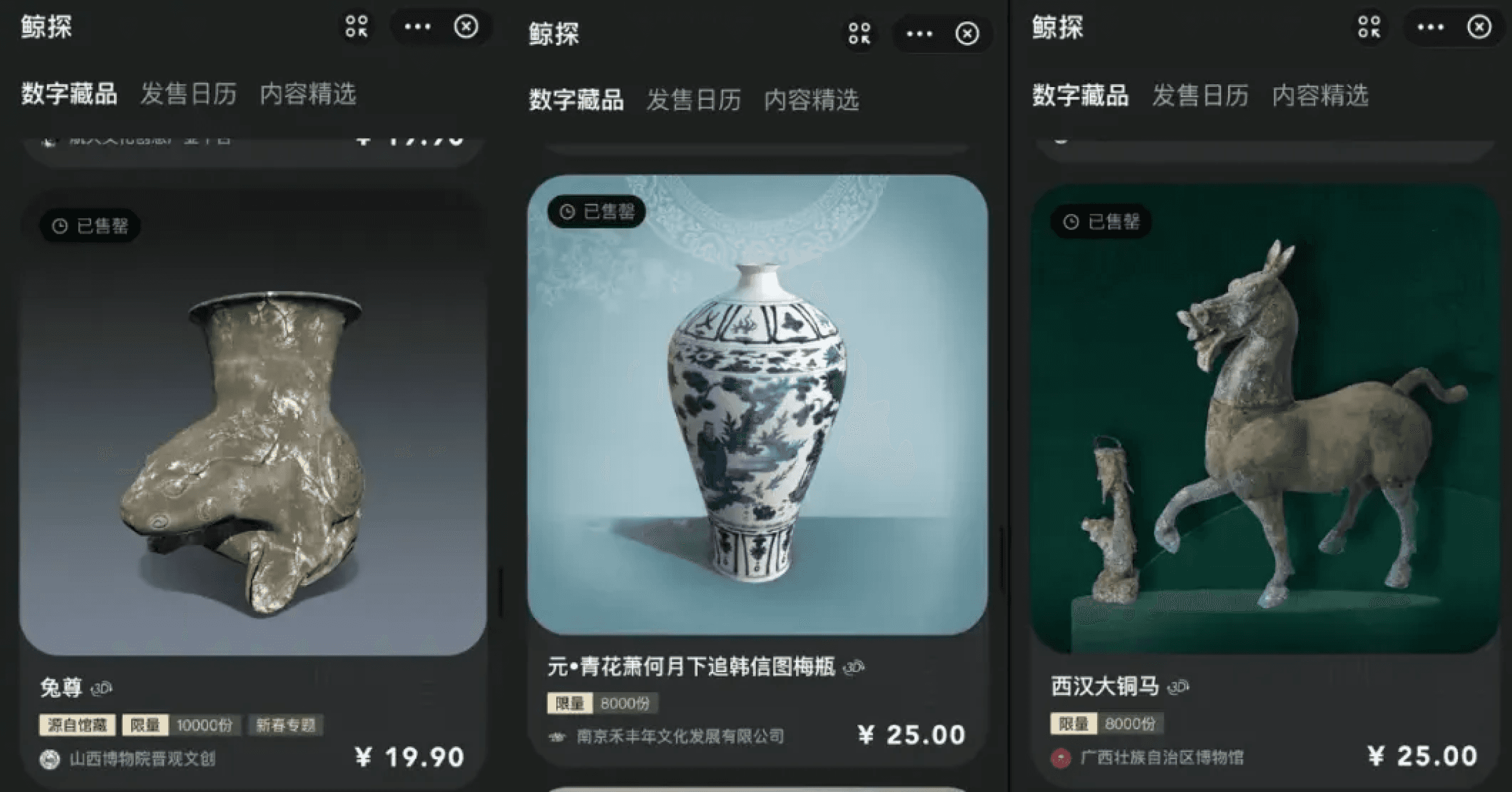
China puts limits on cultural relic NFTs
The Digital Deaccession of Museum Collections
As museums seek to enter the digital space, many are experimenting with different modes of attention and value capture. Whilst some museums such as the Whitworth Museum have launched their own purpose-created NFT artworks, others such as Italy’s Uffizi Gallery have minted singular high value NFTs of critical artworks. This hasty digital deaccession of key artworks (whilst legally does not confer ownership of the principle artwork or rights to its reproduction digitally in any way) highlights a critical misunderstanding of the ‘social and cultural value’ of NFT ownership. Should someone be allowed to own the principal NFT for a core museum artwork? Is it legitimate that any one person should own the digital NFT expression of something so culturally significant?
🔥 Issue 2: What if . . the cryptoart ecosystem functioned to reinforce historical power + access constraints?

The Digital Displacement of Digital-Native Galleries
As more and more physical galleries move online (fuelled initially by Covid lockdowns) but continuing at a cracking pace — will we see the digital displacement of smaller galleries (both online and off) as larger institutions buy up bandwidth and eyeballs in a bid to remain relevant across both ecosystems?
The Invisible Long Tail of Digital Artists
Digital Collectors continue to emphasise the importance of curation and visible exhibition history as key. Furthermore, high value collectors such as Pablo Fraile suggest that within major digital art collections there is a significant overlap of digital artists being collected which suggests there is a whole long tail of artists struggling for visibility within the online art space. Therefore a key challenge emerging for the digital art ecosystem is how best to catalyse scalable discovery and curation.
🔥 Issue 3: Scaleable curation + discovery is key to leveraging the network effects of a digital ecosystem
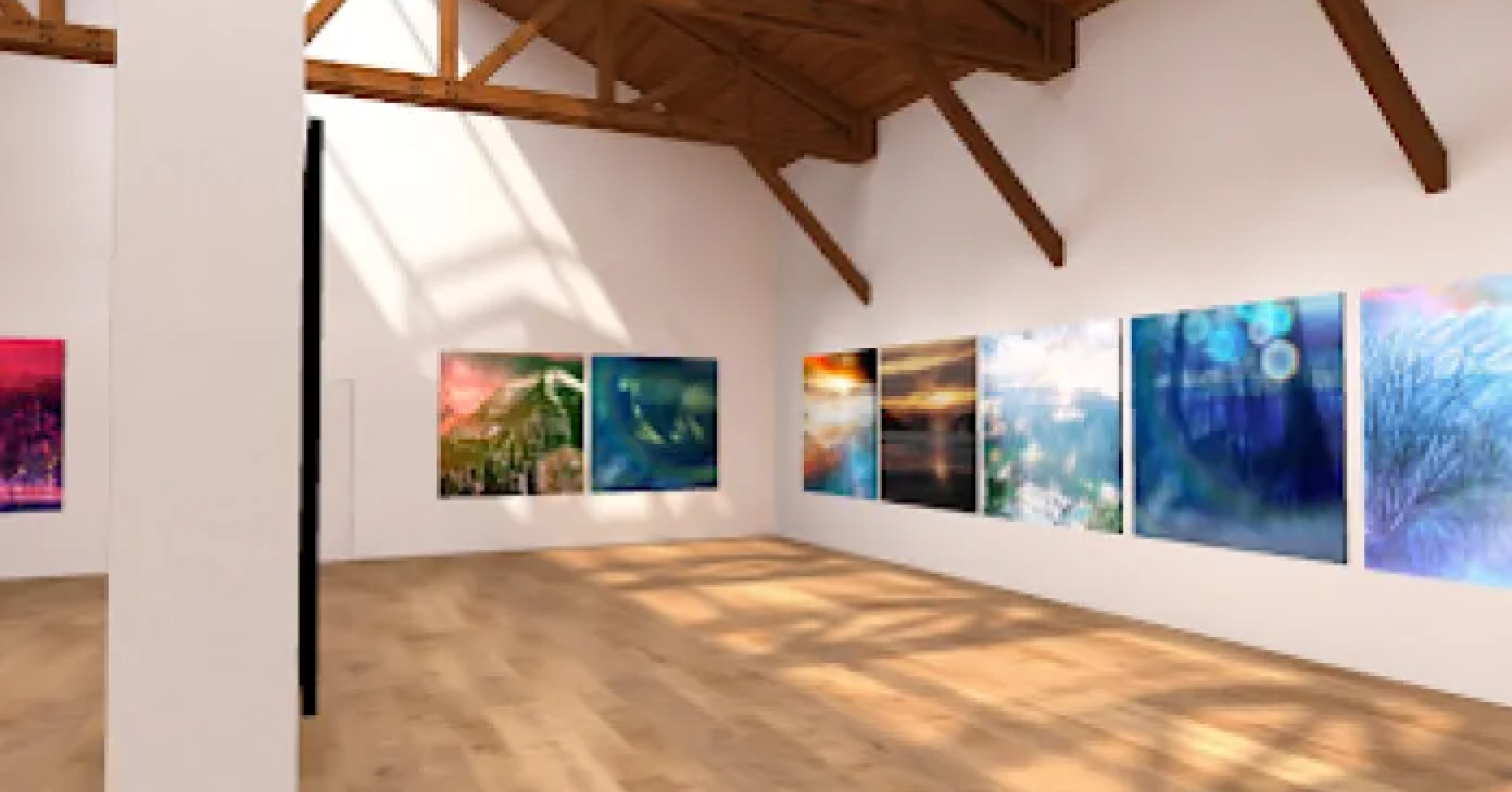
Image: Allan Linder oncyber.io Gallery
Online Metaverse Galleries enable Collectors to curate
Online market spaces like oncyber.io enable collectors and artists to curate their own shows and showcase their collections in a 3D virtual gallery within the metaverse. You could be forgiven for dismissing any metaverse representation of a real-world space as insignificant, but oncyber.io has attracted some of the biggest digital art collectors and is considered an important part of the digital art ecosystem. It’s also giving rise to a new generation of ‘digital tastemakers’ who curate their own collections and attract fans who follow their art purchases closely. Whether physical art galleries will make a move on this space or the curators within it, remains to be seen but it is fast becoming a ‘hotspot’ of digital art activity.
🔥 Issue 4: What digital-native mechanism enables more equitable visibility + discovery for all artists?
Digital-native critics argue artists could prioritise abundance over scarcity
There’s no limit to the things you can create digitally — you’re not buying canvases or spending money on materials, crypto art by its very nature is unlimited. The idea of forcing scarcity is a value constraint of the neoliberalist art system, the value transfer mechanism of a capitalist market system.
🔥 Issue 5: Is scarcity fundamental to a functioning art economy?
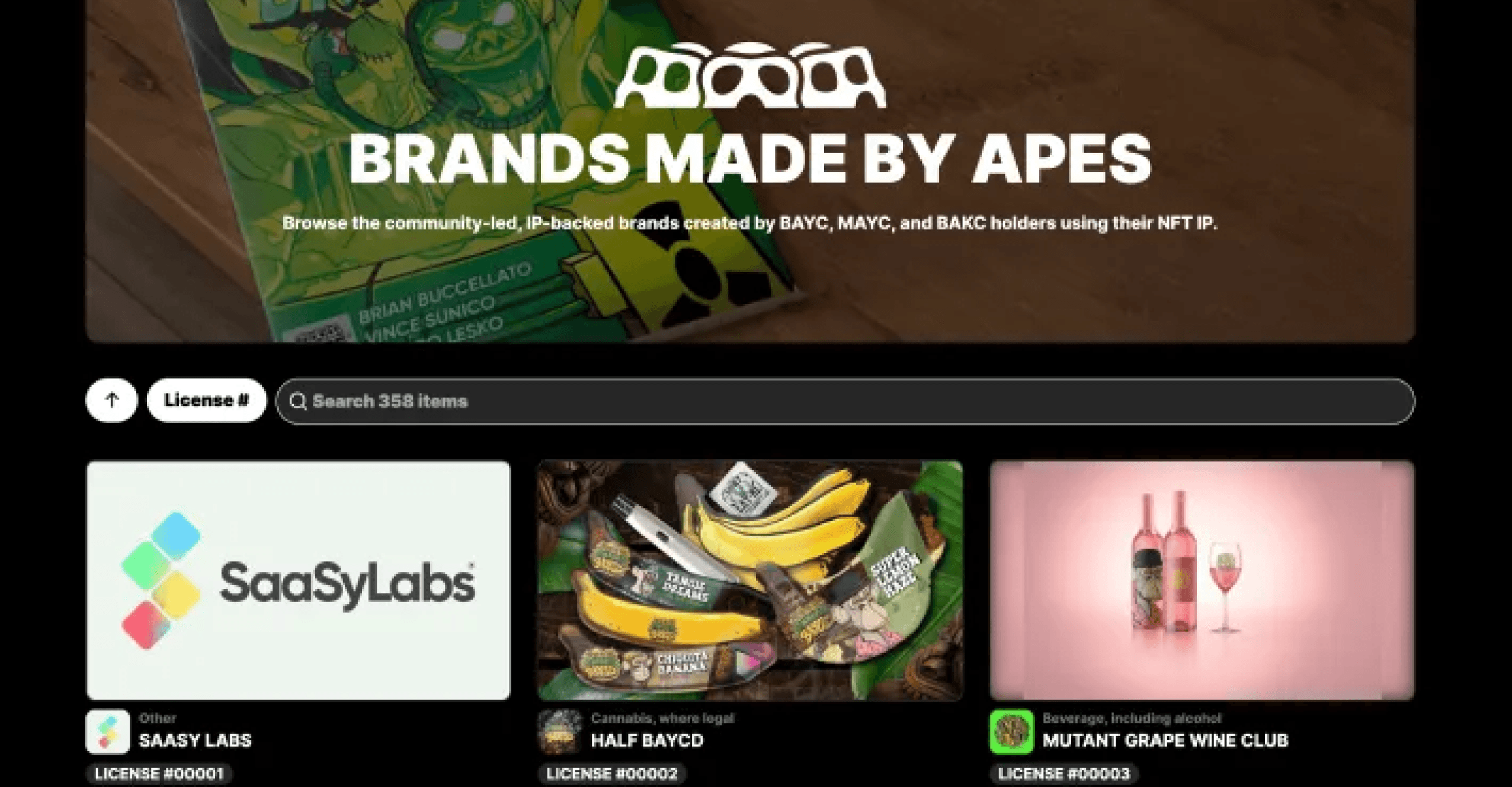
Bored Ape Yacht Club ‘Made by Apes’
High Value NFT Projects are catalysing mini markets within their NFT holder communities
High value NFT communities like Bored Ape Yacht Club (BAYC) are offering NFT token brand extensions such as ‘Made by Apes’ to encourage NFT community holders to utilise their NFT image in personal brands, products and services further legitimizing (and commercializing) the NFT brand. NFT projects like these are functioning as “brandmarks” where users display community connections on product or content outside of the community NFT ecosystem.
🔥 Issue 6: NFT as brandmarks surfaces an old economic value mechanism

In the Incumbent System, Financial Value flows beyond the initial sale do not reach the Artist
The incumbent (physical) art system is modulated by a number of gatekeepers — galleries, auction houses and art dealers, all of whom intersect with the increasing financial value flows that come from valuable artists. However for the artist, once an artwork has been sold — they do not share in the compounding value as the art investment is resold or traded further down the track.
🔥 Issue 7: The fairest models always feed the artist first
The Myth of the Starving Artist continues…
Whilst much commentary online pronounces the myth of the starving artist as dead; the current art economic system leaves many artists outside the value mechanisms (either through restricted access / visibility OR art which falls outside of market demand. This paradigm encourages us to consider — what the wider societal role of art might be and how we cultivate the socio-economic infrastructure to support it beyond art as a wealth building asset?
The Perception of Crypto is still Volatile + AntiSocial
Historically cryptocurrency is synonymous with money laundering and a volatile unstable market system. How do we appropriate a better value transfer narrative that speaks to why crypto economics are important? How and where do we explain — why we need new frameworks, structures and economic models — that surfaces why people who are really into this space, are invested in its progress.
🔥 Issue 8: Crypto still has an image problem
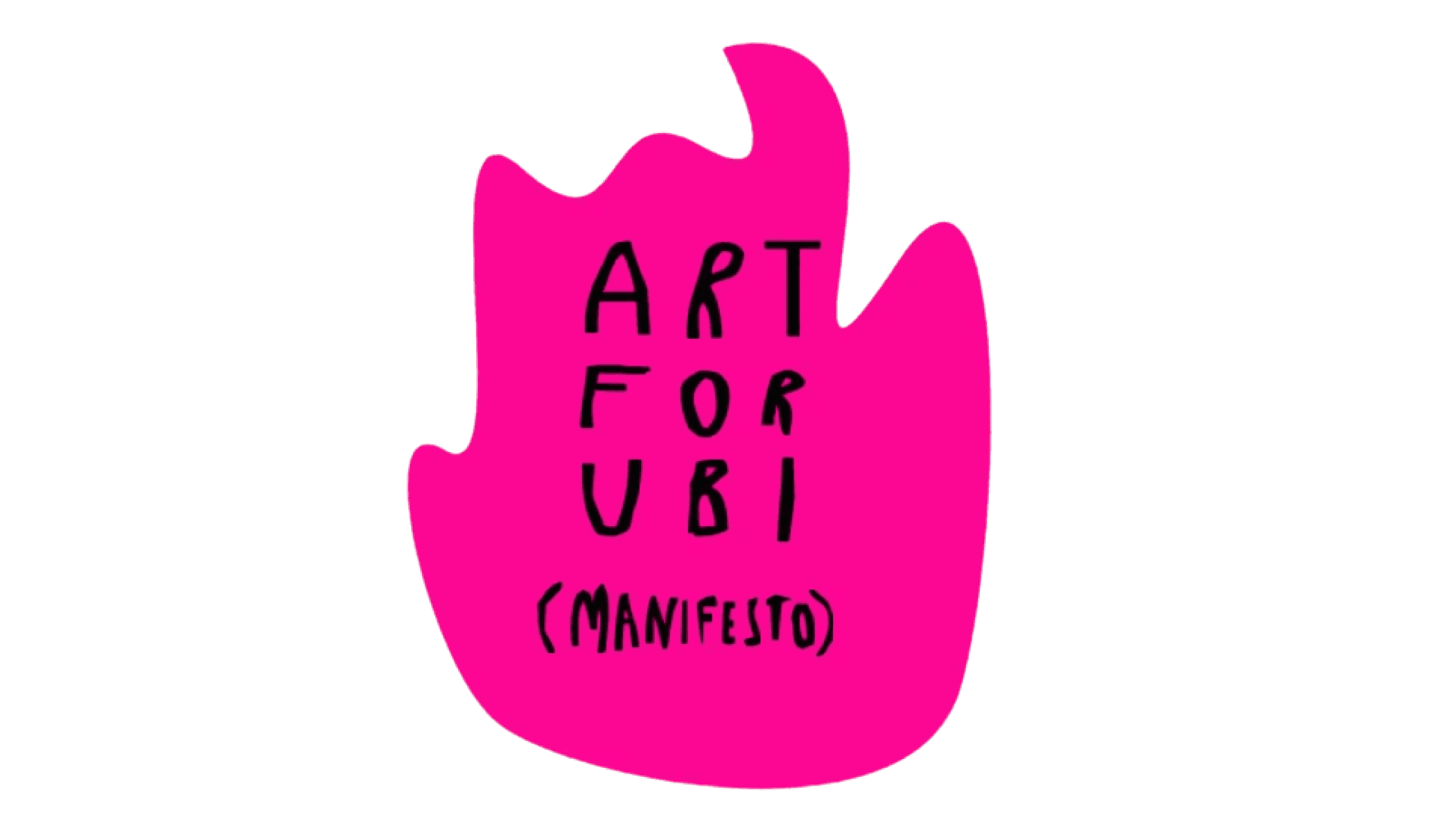
Institute of Radical Imagination
Post-pandemic much discussion has circulated globally on the merits of considering a UBI for creative industry participants. Given the challenges with the current dominant economic system operating within the arts industry — could the UBI provide artists with a sustainable career path in order to focus on their art? How it would be qualified, who would decide and what the impacts would be — are still issues other pilots are grappling with — but as we see the transfer of the economic model from the physical world to the digital — it seems that art-as-asset will define the viability of an art career and in the process, potentially negate the critical social functions of art as we approach challenging possible futures in the years ahead.
🔥 Issue 9: UBI proposes that we detach our livelihood from our work
///
The Futures of Art in a Post-digital World
This post forms part of a much larger project around 'Post-digital Art Futures', further posts can be viewed below:
Exploring the Digital Art EcoSystem : How might the future role and value of Visual Art be transformed in a post-digital world?
Critical Tensions and Transformations Emerging within the Digital Art EcoSystem : Will a crypto-based art economy ever fulfil its promise of emancipation from the historical systems of access, power and value?
A Hypothesis of Change : Exploring potential forces of change shaping emergent futures within the art ecosystem
A New Social Operating System : What role might art play in our ability to imagine alternative positive human futures?
Possible Art Futures : Three Stories of (Post) Growth, power, Art, Ecology and Activism
You can view the extended versions of the three alternate futures narratives hereCivic Imagination : Transforming Governance for a Connected Future - speculative designs
Web3’s Promise of Emancipation has Failed
The early days of the digital-native art system were web3 centric — community, decentralised power + value, and increased autonomy for actors within the system. The introduction of ‘outsiders’ to the system (galleries, VCs), swiftly leveraged both artists and artwork as speculative investments — promptly activated the same neoliberalism model within the digital space, that artists had been navigating in the physical world for decades.

Art Ecosystem Live Map [ Foresight Workflow Tool : Kumu]
🔥 Issue 1: Web3’s promise of emancipation has failed to deliver for the majority of digital artists

China puts limits on cultural relic NFTs
The Digital Deaccession of Museum Collections
As museums seek to enter the digital space, many are experimenting with different modes of attention and value capture. Whilst some museums such as the Whitworth Museum have launched their own purpose-created NFT artworks, others such as Italy’s Uffizi Gallery have minted singular high value NFTs of critical artworks. This hasty digital deaccession of key artworks (whilst legally does not confer ownership of the principle artwork or rights to its reproduction digitally in any way) highlights a critical misunderstanding of the ‘social and cultural value’ of NFT ownership. Should someone be allowed to own the principal NFT for a core museum artwork? Is it legitimate that any one person should own the digital NFT expression of something so culturally significant?
🔥 Issue 2: What if . . the cryptoart ecosystem functioned to reinforce historical power + access constraints?

The Digital Displacement of Digital-Native Galleries
As more and more physical galleries move online (fuelled initially by Covid lockdowns) but continuing at a cracking pace — will we see the digital displacement of smaller galleries (both online and off) as larger institutions buy up bandwidth and eyeballs in a bid to remain relevant across both ecosystems?
The Invisible Long Tail of Digital Artists
Digital Collectors continue to emphasise the importance of curation and visible exhibition history as key. Furthermore, high value collectors such as Pablo Fraile suggest that within major digital art collections there is a significant overlap of digital artists being collected which suggests there is a whole long tail of artists struggling for visibility within the online art space. Therefore a key challenge emerging for the digital art ecosystem is how best to catalyse scalable discovery and curation.
🔥 Issue 3: Scaleable curation + discovery is key to leveraging the network effects of a digital ecosystem

Image: Allan Linder oncyber.io Gallery
Online Metaverse Galleries enable Collectors to curate
Online market spaces like oncyber.io enable collectors and artists to curate their own shows and showcase their collections in a 3D virtual gallery within the metaverse. You could be forgiven for dismissing any metaverse representation of a real-world space as insignificant, but oncyber.io has attracted some of the biggest digital art collectors and is considered an important part of the digital art ecosystem. It’s also giving rise to a new generation of ‘digital tastemakers’ who curate their own collections and attract fans who follow their art purchases closely. Whether physical art galleries will make a move on this space or the curators within it, remains to be seen but it is fast becoming a ‘hotspot’ of digital art activity.
🔥 Issue 4: What digital-native mechanism enables more equitable visibility + discovery for all artists?
Digital-native critics argue artists could prioritise abundance over scarcity
There’s no limit to the things you can create digitally — you’re not buying canvases or spending money on materials, crypto art by its very nature is unlimited. The idea of forcing scarcity is a value constraint of the neoliberalist art system, the value transfer mechanism of a capitalist market system.
🔥 Issue 5: Is scarcity fundamental to a functioning art economy?

Bored Ape Yacht Club ‘Made by Apes’
High Value NFT Projects are catalysing mini markets within their NFT holder communities
High value NFT communities like Bored Ape Yacht Club (BAYC) are offering NFT token brand extensions such as ‘Made by Apes’ to encourage NFT community holders to utilise their NFT image in personal brands, products and services further legitimizing (and commercializing) the NFT brand. NFT projects like these are functioning as “brandmarks” where users display community connections on product or content outside of the community NFT ecosystem.
🔥 Issue 6: NFT as brandmarks surfaces an old economic value mechanism

In the Incumbent System, Financial Value flows beyond the initial sale do not reach the Artist
The incumbent (physical) art system is modulated by a number of gatekeepers — galleries, auction houses and art dealers, all of whom intersect with the increasing financial value flows that come from valuable artists. However for the artist, once an artwork has been sold — they do not share in the compounding value as the art investment is resold or traded further down the track.
🔥 Issue 7: The fairest models always feed the artist first
The Myth of the Starving Artist continues…
Whilst much commentary online pronounces the myth of the starving artist as dead; the current art economic system leaves many artists outside the value mechanisms (either through restricted access / visibility OR art which falls outside of market demand. This paradigm encourages us to consider — what the wider societal role of art might be and how we cultivate the socio-economic infrastructure to support it beyond art as a wealth building asset?
The Perception of Crypto is still Volatile + AntiSocial
Historically cryptocurrency is synonymous with money laundering and a volatile unstable market system. How do we appropriate a better value transfer narrative that speaks to why crypto economics are important? How and where do we explain — why we need new frameworks, structures and economic models — that surfaces why people who are really into this space, are invested in its progress.
🔥 Issue 8: Crypto still has an image problem

Institute of Radical Imagination
Post-pandemic much discussion has circulated globally on the merits of considering a UBI for creative industry participants. Given the challenges with the current dominant economic system operating within the arts industry — could the UBI provide artists with a sustainable career path in order to focus on their art? How it would be qualified, who would decide and what the impacts would be — are still issues other pilots are grappling with — but as we see the transfer of the economic model from the physical world to the digital — it seems that art-as-asset will define the viability of an art career and in the process, potentially negate the critical social functions of art as we approach challenging possible futures in the years ahead.
🔥 Issue 9: UBI proposes that we detach our livelihood from our work
///
The Futures of Art in a Post-digital World
This post forms part of a much larger project around 'Post-digital Art Futures', further posts can be viewed below:
Exploring the Digital Art EcoSystem : How might the future role and value of Visual Art be transformed in a post-digital world?
Critical Tensions and Transformations Emerging within the Digital Art EcoSystem : Will a crypto-based art economy ever fulfil its promise of emancipation from the historical systems of access, power and value?
A Hypothesis of Change : Exploring potential forces of change shaping emergent futures within the art ecosystem
A New Social Operating System : What role might art play in our ability to imagine alternative positive human futures?
Possible Art Futures : Three Stories of (Post) Growth, power, Art, Ecology and Activism
You can view the extended versions of the three alternate futures narratives hereCivic Imagination : Transforming Governance for a Connected Future - speculative designs
Web3’s Promise of Emancipation has Failed
The early days of the digital-native art system were web3 centric — community, decentralised power + value, and increased autonomy for actors within the system. The introduction of ‘outsiders’ to the system (galleries, VCs), swiftly leveraged both artists and artwork as speculative investments — promptly activated the same neoliberalism model within the digital space, that artists had been navigating in the physical world for decades.

Art Ecosystem Live Map [ Foresight Workflow Tool : Kumu]
🔥 Issue 1: Web3’s promise of emancipation has failed to deliver for the majority of digital artists

China puts limits on cultural relic NFTs
The Digital Deaccession of Museum Collections
As museums seek to enter the digital space, many are experimenting with different modes of attention and value capture. Whilst some museums such as the Whitworth Museum have launched their own purpose-created NFT artworks, others such as Italy’s Uffizi Gallery have minted singular high value NFTs of critical artworks. This hasty digital deaccession of key artworks (whilst legally does not confer ownership of the principle artwork or rights to its reproduction digitally in any way) highlights a critical misunderstanding of the ‘social and cultural value’ of NFT ownership. Should someone be allowed to own the principal NFT for a core museum artwork? Is it legitimate that any one person should own the digital NFT expression of something so culturally significant?
🔥 Issue 2: What if . . the cryptoart ecosystem functioned to reinforce historical power + access constraints?

The Digital Displacement of Digital-Native Galleries
As more and more physical galleries move online (fuelled initially by Covid lockdowns) but continuing at a cracking pace — will we see the digital displacement of smaller galleries (both online and off) as larger institutions buy up bandwidth and eyeballs in a bid to remain relevant across both ecosystems?
The Invisible Long Tail of Digital Artists
Digital Collectors continue to emphasise the importance of curation and visible exhibition history as key. Furthermore, high value collectors such as Pablo Fraile suggest that within major digital art collections there is a significant overlap of digital artists being collected which suggests there is a whole long tail of artists struggling for visibility within the online art space. Therefore a key challenge emerging for the digital art ecosystem is how best to catalyse scalable discovery and curation.
🔥 Issue 3: Scaleable curation + discovery is key to leveraging the network effects of a digital ecosystem

Image: Allan Linder oncyber.io Gallery
Online Metaverse Galleries enable Collectors to curate
Online market spaces like oncyber.io enable collectors and artists to curate their own shows and showcase their collections in a 3D virtual gallery within the metaverse. You could be forgiven for dismissing any metaverse representation of a real-world space as insignificant, but oncyber.io has attracted some of the biggest digital art collectors and is considered an important part of the digital art ecosystem. It’s also giving rise to a new generation of ‘digital tastemakers’ who curate their own collections and attract fans who follow their art purchases closely. Whether physical art galleries will make a move on this space or the curators within it, remains to be seen but it is fast becoming a ‘hotspot’ of digital art activity.
🔥 Issue 4: What digital-native mechanism enables more equitable visibility + discovery for all artists?
Digital-native critics argue artists could prioritise abundance over scarcity
There’s no limit to the things you can create digitally — you’re not buying canvases or spending money on materials, crypto art by its very nature is unlimited. The idea of forcing scarcity is a value constraint of the neoliberalist art system, the value transfer mechanism of a capitalist market system.
🔥 Issue 5: Is scarcity fundamental to a functioning art economy?

Bored Ape Yacht Club ‘Made by Apes’
High Value NFT Projects are catalysing mini markets within their NFT holder communities
High value NFT communities like Bored Ape Yacht Club (BAYC) are offering NFT token brand extensions such as ‘Made by Apes’ to encourage NFT community holders to utilise their NFT image in personal brands, products and services further legitimizing (and commercializing) the NFT brand. NFT projects like these are functioning as “brandmarks” where users display community connections on product or content outside of the community NFT ecosystem.
🔥 Issue 6: NFT as brandmarks surfaces an old economic value mechanism

In the Incumbent System, Financial Value flows beyond the initial sale do not reach the Artist
The incumbent (physical) art system is modulated by a number of gatekeepers — galleries, auction houses and art dealers, all of whom intersect with the increasing financial value flows that come from valuable artists. However for the artist, once an artwork has been sold — they do not share in the compounding value as the art investment is resold or traded further down the track.
🔥 Issue 7: The fairest models always feed the artist first
The Myth of the Starving Artist continues…
Whilst much commentary online pronounces the myth of the starving artist as dead; the current art economic system leaves many artists outside the value mechanisms (either through restricted access / visibility OR art which falls outside of market demand. This paradigm encourages us to consider — what the wider societal role of art might be and how we cultivate the socio-economic infrastructure to support it beyond art as a wealth building asset?
The Perception of Crypto is still Volatile + AntiSocial
Historically cryptocurrency is synonymous with money laundering and a volatile unstable market system. How do we appropriate a better value transfer narrative that speaks to why crypto economics are important? How and where do we explain — why we need new frameworks, structures and economic models — that surfaces why people who are really into this space, are invested in its progress.
🔥 Issue 8: Crypto still has an image problem

Institute of Radical Imagination
Post-pandemic much discussion has circulated globally on the merits of considering a UBI for creative industry participants. Given the challenges with the current dominant economic system operating within the arts industry — could the UBI provide artists with a sustainable career path in order to focus on their art? How it would be qualified, who would decide and what the impacts would be — are still issues other pilots are grappling with — but as we see the transfer of the economic model from the physical world to the digital — it seems that art-as-asset will define the viability of an art career and in the process, potentially negate the critical social functions of art as we approach challenging possible futures in the years ahead.
🔥 Issue 9: UBI proposes that we detach our livelihood from our work
///
The Futures of Art in a Post-digital World
This post forms part of a much larger project around 'Post-digital Art Futures', further posts can be viewed below:
Exploring the Digital Art EcoSystem : How might the future role and value of Visual Art be transformed in a post-digital world?
Critical Tensions and Transformations Emerging within the Digital Art EcoSystem : Will a crypto-based art economy ever fulfil its promise of emancipation from the historical systems of access, power and value?
A Hypothesis of Change : Exploring potential forces of change shaping emergent futures within the art ecosystem
A New Social Operating System : What role might art play in our ability to imagine alternative positive human futures?
Possible Art Futures : Three Stories of (Post) Growth, power, Art, Ecology and Activism
You can view the extended versions of the three alternate futures narratives hereCivic Imagination : Transforming Governance for a Connected Future - speculative designs
Web3’s Promise of Emancipation has Failed
The early days of the digital-native art system were web3 centric — community, decentralised power + value, and increased autonomy for actors within the system. The introduction of ‘outsiders’ to the system (galleries, VCs), swiftly leveraged both artists and artwork as speculative investments — promptly activated the same neoliberalism model within the digital space, that artists had been navigating in the physical world for decades.

Art Ecosystem Live Map [ Foresight Workflow Tool : Kumu]
🔥 Issue 1: Web3’s promise of emancipation has failed to deliver for the majority of digital artists

China puts limits on cultural relic NFTs
The Digital Deaccession of Museum Collections
As museums seek to enter the digital space, many are experimenting with different modes of attention and value capture. Whilst some museums such as the Whitworth Museum have launched their own purpose-created NFT artworks, others such as Italy’s Uffizi Gallery have minted singular high value NFTs of critical artworks. This hasty digital deaccession of key artworks (whilst legally does not confer ownership of the principle artwork or rights to its reproduction digitally in any way) highlights a critical misunderstanding of the ‘social and cultural value’ of NFT ownership. Should someone be allowed to own the principal NFT for a core museum artwork? Is it legitimate that any one person should own the digital NFT expression of something so culturally significant?
🔥 Issue 2: What if . . the cryptoart ecosystem functioned to reinforce historical power + access constraints?

The Digital Displacement of Digital-Native Galleries
As more and more physical galleries move online (fuelled initially by Covid lockdowns) but continuing at a cracking pace — will we see the digital displacement of smaller galleries (both online and off) as larger institutions buy up bandwidth and eyeballs in a bid to remain relevant across both ecosystems?
The Invisible Long Tail of Digital Artists
Digital Collectors continue to emphasise the importance of curation and visible exhibition history as key. Furthermore, high value collectors such as Pablo Fraile suggest that within major digital art collections there is a significant overlap of digital artists being collected which suggests there is a whole long tail of artists struggling for visibility within the online art space. Therefore a key challenge emerging for the digital art ecosystem is how best to catalyse scalable discovery and curation.
🔥 Issue 3: Scaleable curation + discovery is key to leveraging the network effects of a digital ecosystem

Image: Allan Linder oncyber.io Gallery
Online Metaverse Galleries enable Collectors to curate
Online market spaces like oncyber.io enable collectors and artists to curate their own shows and showcase their collections in a 3D virtual gallery within the metaverse. You could be forgiven for dismissing any metaverse representation of a real-world space as insignificant, but oncyber.io has attracted some of the biggest digital art collectors and is considered an important part of the digital art ecosystem. It’s also giving rise to a new generation of ‘digital tastemakers’ who curate their own collections and attract fans who follow their art purchases closely. Whether physical art galleries will make a move on this space or the curators within it, remains to be seen but it is fast becoming a ‘hotspot’ of digital art activity.
🔥 Issue 4: What digital-native mechanism enables more equitable visibility + discovery for all artists?
Digital-native critics argue artists could prioritise abundance over scarcity
There’s no limit to the things you can create digitally — you’re not buying canvases or spending money on materials, crypto art by its very nature is unlimited. The idea of forcing scarcity is a value constraint of the neoliberalist art system, the value transfer mechanism of a capitalist market system.
🔥 Issue 5: Is scarcity fundamental to a functioning art economy?

Bored Ape Yacht Club ‘Made by Apes’
High Value NFT Projects are catalysing mini markets within their NFT holder communities
High value NFT communities like Bored Ape Yacht Club (BAYC) are offering NFT token brand extensions such as ‘Made by Apes’ to encourage NFT community holders to utilise their NFT image in personal brands, products and services further legitimizing (and commercializing) the NFT brand. NFT projects like these are functioning as “brandmarks” where users display community connections on product or content outside of the community NFT ecosystem.
🔥 Issue 6: NFT as brandmarks surfaces an old economic value mechanism

In the Incumbent System, Financial Value flows beyond the initial sale do not reach the Artist
The incumbent (physical) art system is modulated by a number of gatekeepers — galleries, auction houses and art dealers, all of whom intersect with the increasing financial value flows that come from valuable artists. However for the artist, once an artwork has been sold — they do not share in the compounding value as the art investment is resold or traded further down the track.
🔥 Issue 7: The fairest models always feed the artist first
The Myth of the Starving Artist continues…
Whilst much commentary online pronounces the myth of the starving artist as dead; the current art economic system leaves many artists outside the value mechanisms (either through restricted access / visibility OR art which falls outside of market demand. This paradigm encourages us to consider — what the wider societal role of art might be and how we cultivate the socio-economic infrastructure to support it beyond art as a wealth building asset?
The Perception of Crypto is still Volatile + AntiSocial
Historically cryptocurrency is synonymous with money laundering and a volatile unstable market system. How do we appropriate a better value transfer narrative that speaks to why crypto economics are important? How and where do we explain — why we need new frameworks, structures and economic models — that surfaces why people who are really into this space, are invested in its progress.
🔥 Issue 8: Crypto still has an image problem

Institute of Radical Imagination
Post-pandemic much discussion has circulated globally on the merits of considering a UBI for creative industry participants. Given the challenges with the current dominant economic system operating within the arts industry — could the UBI provide artists with a sustainable career path in order to focus on their art? How it would be qualified, who would decide and what the impacts would be — are still issues other pilots are grappling with — but as we see the transfer of the economic model from the physical world to the digital — it seems that art-as-asset will define the viability of an art career and in the process, potentially negate the critical social functions of art as we approach challenging possible futures in the years ahead.
🔥 Issue 9: UBI proposes that we detach our livelihood from our work
///
The Futures of Art in a Post-digital World
This post forms part of a much larger project around 'Post-digital Art Futures', further posts can be viewed below:
Exploring the Digital Art EcoSystem : How might the future role and value of Visual Art be transformed in a post-digital world?
Critical Tensions and Transformations Emerging within the Digital Art EcoSystem : Will a crypto-based art economy ever fulfil its promise of emancipation from the historical systems of access, power and value?
A Hypothesis of Change : Exploring potential forces of change shaping emergent futures within the art ecosystem
A New Social Operating System : What role might art play in our ability to imagine alternative positive human futures?
Possible Art Futures : Three Stories of (Post) Growth, power, Art, Ecology and Activism
You can view the extended versions of the three alternate futures narratives hereCivic Imagination : Transforming Governance for a Connected Future - speculative designs
Web3’s Promise of Emancipation has Failed
The early days of the digital-native art system were web3 centric — community, decentralised power + value, and increased autonomy for actors within the system. The introduction of ‘outsiders’ to the system (galleries, VCs), swiftly leveraged both artists and artwork as speculative investments — promptly activated the same neoliberalism model within the digital space, that artists had been navigating in the physical world for decades.

Art Ecosystem Live Map [ Foresight Workflow Tool : Kumu]
🔥 Issue 1: Web3’s promise of emancipation has failed to deliver for the majority of digital artists

China puts limits on cultural relic NFTs
The Digital Deaccession of Museum Collections
As museums seek to enter the digital space, many are experimenting with different modes of attention and value capture. Whilst some museums such as the Whitworth Museum have launched their own purpose-created NFT artworks, others such as Italy’s Uffizi Gallery have minted singular high value NFTs of critical artworks. This hasty digital deaccession of key artworks (whilst legally does not confer ownership of the principle artwork or rights to its reproduction digitally in any way) highlights a critical misunderstanding of the ‘social and cultural value’ of NFT ownership. Should someone be allowed to own the principal NFT for a core museum artwork? Is it legitimate that any one person should own the digital NFT expression of something so culturally significant?
🔥 Issue 2: What if . . the cryptoart ecosystem functioned to reinforce historical power + access constraints?

The Digital Displacement of Digital-Native Galleries
As more and more physical galleries move online (fuelled initially by Covid lockdowns) but continuing at a cracking pace — will we see the digital displacement of smaller galleries (both online and off) as larger institutions buy up bandwidth and eyeballs in a bid to remain relevant across both ecosystems?
The Invisible Long Tail of Digital Artists
Digital Collectors continue to emphasise the importance of curation and visible exhibition history as key. Furthermore, high value collectors such as Pablo Fraile suggest that within major digital art collections there is a significant overlap of digital artists being collected which suggests there is a whole long tail of artists struggling for visibility within the online art space. Therefore a key challenge emerging for the digital art ecosystem is how best to catalyse scalable discovery and curation.
🔥 Issue 3: Scaleable curation + discovery is key to leveraging the network effects of a digital ecosystem

Image: Allan Linder oncyber.io Gallery
Online Metaverse Galleries enable Collectors to curate
Online market spaces like oncyber.io enable collectors and artists to curate their own shows and showcase their collections in a 3D virtual gallery within the metaverse. You could be forgiven for dismissing any metaverse representation of a real-world space as insignificant, but oncyber.io has attracted some of the biggest digital art collectors and is considered an important part of the digital art ecosystem. It’s also giving rise to a new generation of ‘digital tastemakers’ who curate their own collections and attract fans who follow their art purchases closely. Whether physical art galleries will make a move on this space or the curators within it, remains to be seen but it is fast becoming a ‘hotspot’ of digital art activity.
🔥 Issue 4: What digital-native mechanism enables more equitable visibility + discovery for all artists?
Digital-native critics argue artists could prioritise abundance over scarcity
There’s no limit to the things you can create digitally — you’re not buying canvases or spending money on materials, crypto art by its very nature is unlimited. The idea of forcing scarcity is a value constraint of the neoliberalist art system, the value transfer mechanism of a capitalist market system.
🔥 Issue 5: Is scarcity fundamental to a functioning art economy?

Bored Ape Yacht Club ‘Made by Apes’
High Value NFT Projects are catalysing mini markets within their NFT holder communities
High value NFT communities like Bored Ape Yacht Club (BAYC) are offering NFT token brand extensions such as ‘Made by Apes’ to encourage NFT community holders to utilise their NFT image in personal brands, products and services further legitimizing (and commercializing) the NFT brand. NFT projects like these are functioning as “brandmarks” where users display community connections on product or content outside of the community NFT ecosystem.
🔥 Issue 6: NFT as brandmarks surfaces an old economic value mechanism

In the Incumbent System, Financial Value flows beyond the initial sale do not reach the Artist
The incumbent (physical) art system is modulated by a number of gatekeepers — galleries, auction houses and art dealers, all of whom intersect with the increasing financial value flows that come from valuable artists. However for the artist, once an artwork has been sold — they do not share in the compounding value as the art investment is resold or traded further down the track.
🔥 Issue 7: The fairest models always feed the artist first
The Myth of the Starving Artist continues…
Whilst much commentary online pronounces the myth of the starving artist as dead; the current art economic system leaves many artists outside the value mechanisms (either through restricted access / visibility OR art which falls outside of market demand. This paradigm encourages us to consider — what the wider societal role of art might be and how we cultivate the socio-economic infrastructure to support it beyond art as a wealth building asset?
The Perception of Crypto is still Volatile + AntiSocial
Historically cryptocurrency is synonymous with money laundering and a volatile unstable market system. How do we appropriate a better value transfer narrative that speaks to why crypto economics are important? How and where do we explain — why we need new frameworks, structures and economic models — that surfaces why people who are really into this space, are invested in its progress.
🔥 Issue 8: Crypto still has an image problem

Institute of Radical Imagination
Post-pandemic much discussion has circulated globally on the merits of considering a UBI for creative industry participants. Given the challenges with the current dominant economic system operating within the arts industry — could the UBI provide artists with a sustainable career path in order to focus on their art? How it would be qualified, who would decide and what the impacts would be — are still issues other pilots are grappling with — but as we see the transfer of the economic model from the physical world to the digital — it seems that art-as-asset will define the viability of an art career and in the process, potentially negate the critical social functions of art as we approach challenging possible futures in the years ahead.
🔥 Issue 9: UBI proposes that we detach our livelihood from our work
///
The Futures of Art in a Post-digital World
This post forms part of a much larger project around 'Post-digital Art Futures', further posts can be viewed below:
Exploring the Digital Art EcoSystem : How might the future role and value of Visual Art be transformed in a post-digital world?
Critical Tensions and Transformations Emerging within the Digital Art EcoSystem : Will a crypto-based art economy ever fulfil its promise of emancipation from the historical systems of access, power and value?
A Hypothesis of Change : Exploring potential forces of change shaping emergent futures within the art ecosystem
A New Social Operating System : What role might art play in our ability to imagine alternative positive human futures?
Possible Art Futures : Three Stories of (Post) Growth, power, Art, Ecology and Activism
You can view the extended versions of the three alternate futures narratives hereCivic Imagination : Transforming Governance for a Connected Future - speculative designs
Tags
future art ecosystems, digital art, glitch,
⚒️ | Figma | Pitch | Midjourney
You might also like
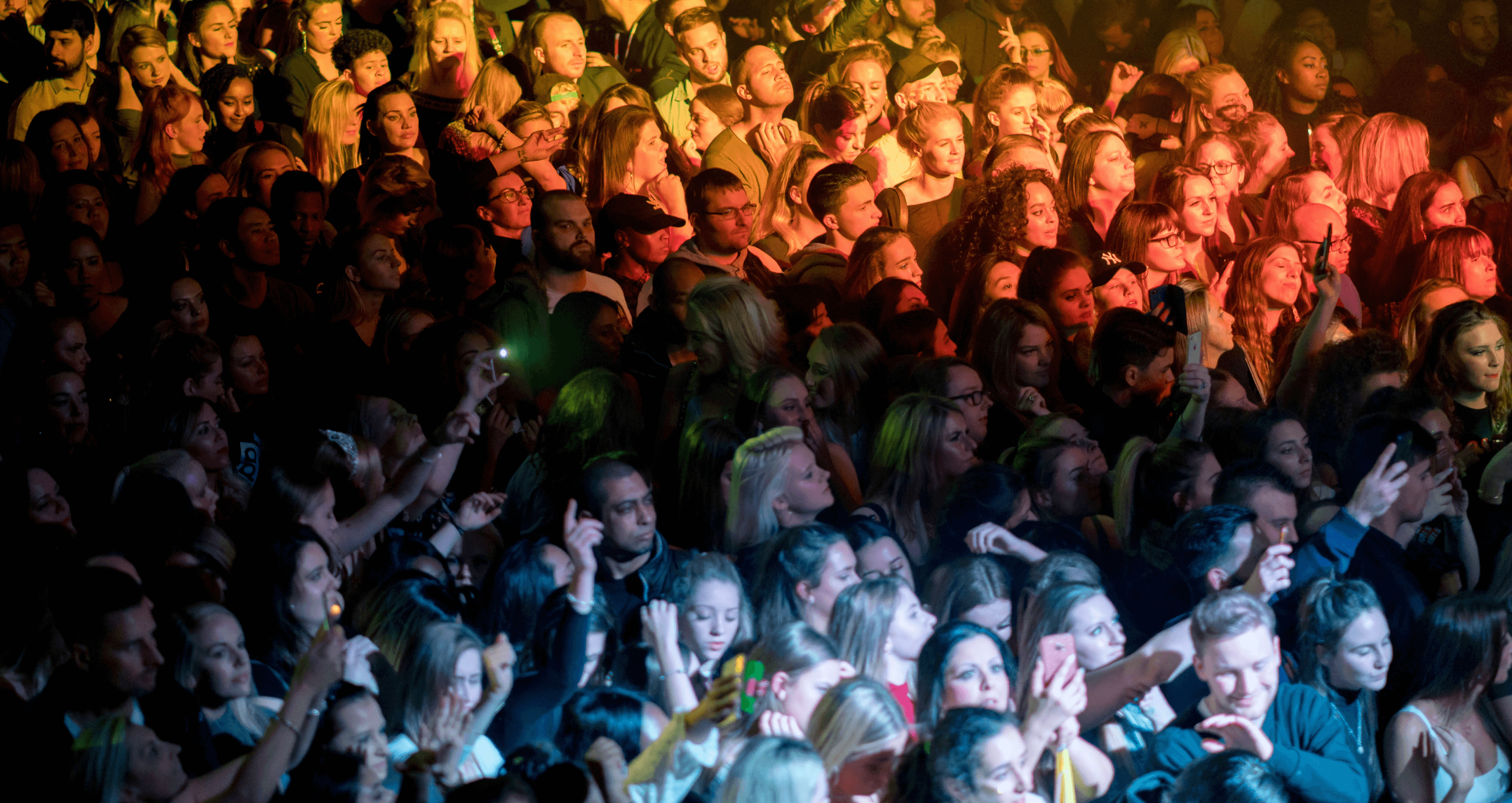
Political Notion
Information Architecture

Political Notion
Information Architecture

Neurodiversity Resources
Concept Development

Neurodiversity Resources
Concept Development
🛠️ Tools + Resources